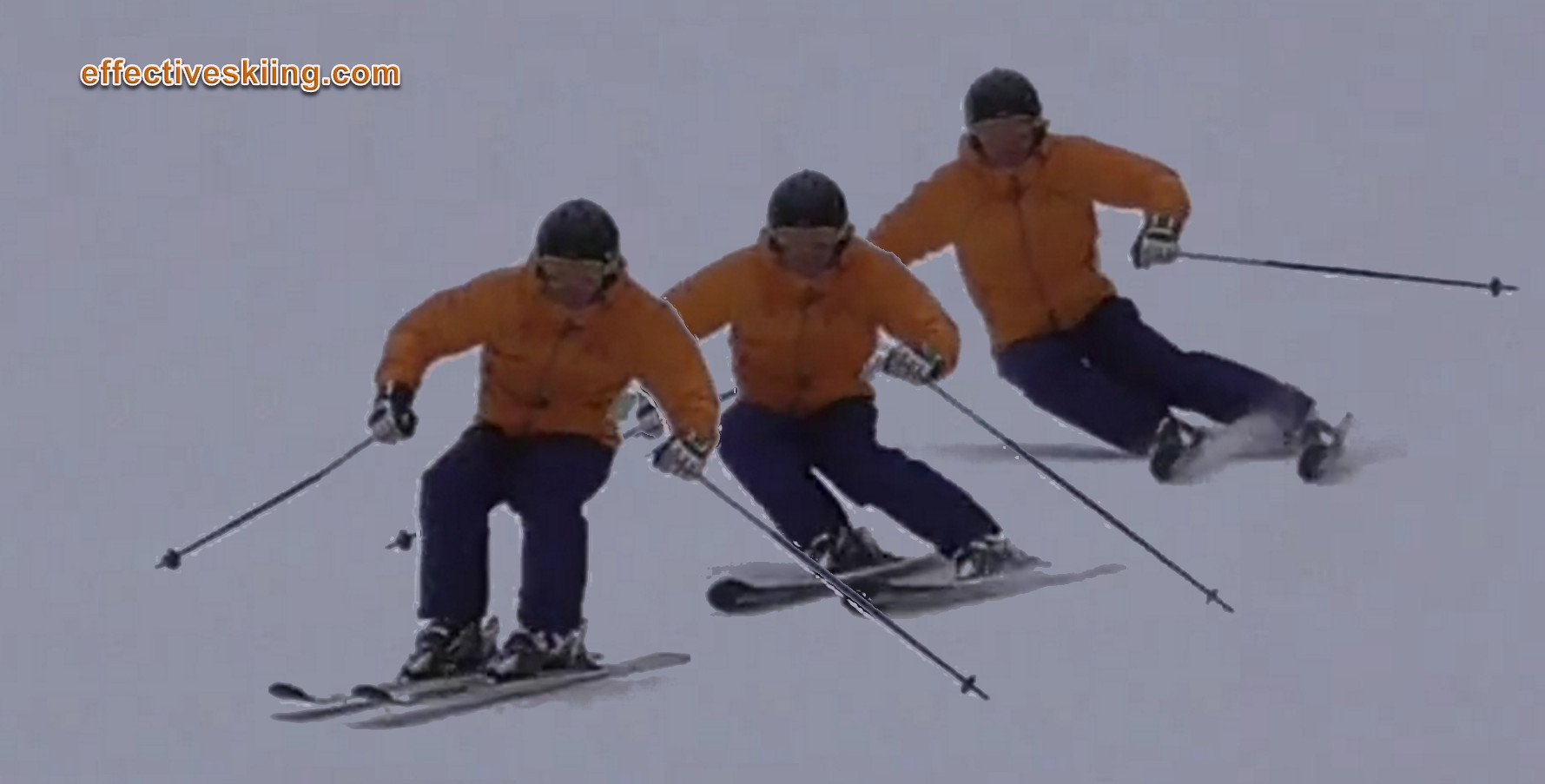Cross-over versus cross-under or how to ski well
Subscribe
Pub
Share
From our cycle on the transition and to some extent a continuation of the previous post on Low in transition, here is a more detailed comparison of the two major releases categories.
I don't really like the "cross-over" or "cross-under" terminology, it doesn't seem to convey anything of value. Of course, the body crosses OVER the skis and the skis cross UNDER the body unless you are doing a flip or are jusyt about to get hurt... those names seem randomly assigned (i.e. you need some semantical behind-the-scenes knowledge to understand them).
The issue is not even how we cross the skis - the issue really is how we release the skis!
What really matters is whether you flex to release the ski vs extending to release and hop off the ski, and we'll take another look at the differences, below.
By contrast, "cross-over" and "cross-under" convey no useful information, without an additional knowledge.
For those interested in more details, lookup entropy and Shanon's Theory of Information - it's a very interesting subject!
Flexing to release
The benefits of flexing to release are a smooth release, where you retain control of the skis at all times. Even if your timing is off and you are disconnected from the snow like me below, the hips being low and knee flexion allows you both instant pressure control and foot tipping into the next turn, i.e. complete ski control from the lower body.
The other benefit of flexing to release is that you are flexed in transition and that way you can use foot tipping. When your legs are long in transition, you cannot tip the feet and you will end up either waiting to fall back down and create flexion first, or hip dumping... so if your philosophy is to edge and control the ski with the lower body, then you will need flexion!
How deeply you flex is a tactical choice, depending on what turns you're looking to get - the quicker the turns, the more you need to flex. The quicker the need to switch the edges, the more you need to flex.
A good demonstration of the differences is visible in this drill - note how slow tipping is at the beginning with a long leg and how you can speed up the tipping as the knees bend in transition - all the way to the last few turns which are impossible if you don't flex deeply:
Generally the drawback with flexing is that it's harder to coach, you'll need some specific skills to coach flexing effectively into someone's skiing - because beginners will have a hard time with the timing of it and will tend to get tired and also it changes the speed control equation, so you need some serious knowledge and also to do some serious coaching there, otherwise they'll refuse to do it or will lose that quickly.
Extension The extension will disconnect you from the snow - even if you manage to keep the skis in contact, your hips are launched up and unable to control pressure until you get "back down" or land back on the skis.
The other drawback, already mentioned, is that you cannot tip the skis on edge from the feet, when the knee is not flexed. This explains why those skiers that extend or hop to release will also prefer steering and hip-dumping as opposed to foot tipping and that's why this is such a big deal. It really is as simple as that.
The other problem with the extension is that you are pressuring the skis at the end of the turn - you have to, in order to "hop". This will not allow you to tip the skis early, so it will delay your turns.
The issue of powder is not that relevant IMHO, but I've only skied up to 1 foot deep... the extension has some limited use in hard terrain and avoiding rocks (or jumping over people in bumps :eek:), but it is easier to teach, because most people are used to pushing themselves from foot to foot (i.e. walking/running/skating etc). The thing that I find is that the more they ski like that, the harder it is to teach them flexing, as it is quite counter-intuitive, so they will always be limited in their evolution.
You can see this by trying to do these turns with extension and a long leg and you will find it impossible to do the same turns:
or this:
Weirdness Some skiers will flex towards the end of the turn and then extend at the last moment, to get off the ski, that combination is kind of weird and pointless for me ;)
p.s. the discussion can get quite a fair bit more detailed and complex as you dig deep into racing and performance skiing and the effects there, but that's the crux of it.
See more in: carving-blog Subscribe You need to log in to post a comment!

